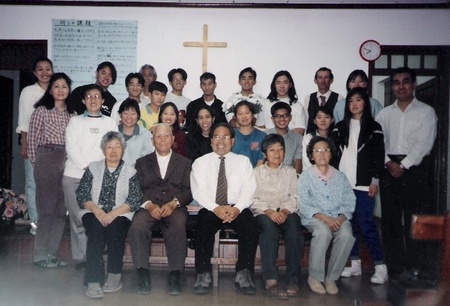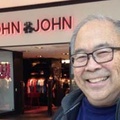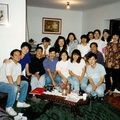It’s been almost ten years since my friend, the senior Tsuchida-san, died in Paraguay. He was the Issei (first generation) patriarch of the Japanese community. And I knew from experience that if I was going to make inroads into that community, the permission to do so would have to come from him.
It is customary in the Japanese culture for an outsider to make an initial visit to get acquainted and seek permission. It is an important social courtesy in the Japanese culture, whether in Japan, the U.S., or in South America. For me, that initial visit was challenging as Tsuchida-san spoke Japanese and limited Spanish and I spoke English and Portuguese.
There is some truth to those who would suggest that Spanish and Portuguese are close. They’re cousins, but not twins. The example I suggest is in the simple exchange of “Thank you” and “You’re welcome.”
“You’re welcome” is identical in both languages, “de nada.” The pronunciations are slightly different. “Thank you” however, is completely different and could not be conceived even with a good understanding of Spanish. The Spanish “thanks very much” is “muchas gracias.” Portuguese is “muito obrigado” (translated as, much obliged).
Despite our language differences, Tsuchida-san insisted that I meet him at his residence. There his wife would disappear into the kitchen, returning a few moments later with a lacquer tray with a teapot, teacups, and some rice crackers. This is a ritual that repeats itself in any Japanese home whenever a guest arrives. Or at least it once did. After serving the two of us, Sra. Tsuchida disappeared into the kitchen permitting the men to conduct business.
Our conversation was interesting. I learned far more about Tsuchida-san than he learned about my proposal to bring student volunteers to Pedro Juan Caballero. He showed me old and faded maps. They were printed in Japanese. They were maps he told me of Manchukuo (Manchuria) where he had served in the Japanese army. I looked around the living room to find an interesting blend of Japanese and South American cultural artifacts.
Finding an interested audience in me, he then took me outside to what appeared to be a large barn. In it he showed me several framed sketches or watercolors. “Yo eh cho,” he said, “Yo eh cho.”
What? I didn’t understand the words, but through his gestures came to understand that he had himself done the paintings and the frames. (He was saying, “Yo hecho” or “I made this.” Technically, he should have said, “Yo hice”—yoh eesay—but his Spanish was limited by my ability to understand it).
We went around to the front of the house where he showed me his motor scooter. Tsuchida-san must have been in his late seventies or early-eighties, but this is how he got around. That day however, we would walk. He wanted me to meet other key Nikkei people in the town.
We stopped at about four homes and in each were treated to a cup of tea or a glass of Coca-Cola. Thankfully, some of these families spoke Portuguese and it made the conversations much easier (Pedro Juan Caballero sits on the Paraguayan border next to Brazil. Many families do business in both countries and therefore speak at least a basic level of Portuguese).
Tsuchida-san opened the door of welcome for me. And as a result more than twenty different young Asian American student volunteers would come to know and love Pedro Juan Caballero, the Yoshizakis, Rie, Mika, Eiji, Goro…and Tsuchida-san.
He was there at the church for the services and would stop by to visit when we were conducting our kids programs. He would study us as we worked and after a while, you’d see the smile break out on his face as the children of this colony were screaming with delight during the game times.

John Katagi, pictured center, at the Amambay Free Methodist Church in Pedro Juan Caballero, Paraguay. Mr. Tsuchida is sitting to Katagi's right (1997).
Tsuchida-san was the patriarch of that community. He would visit and, in his way, care for the Nikkei families in Pedro Juan. When someone was sick or when a family might be short of groceries or maybe wanted to see the latest videotape of the Japanese satellite TV show they missed, Tsuchida-san would be on his motor scooter making the rounds.
I heard that this was how he died. On the way either to the church or to someone’s home, he was on his motor scooter when he was struck by a truck traveling at a high speed through town. I am sure that his presence is missed in this Japanese colony town.
© 2011 John Katagi






